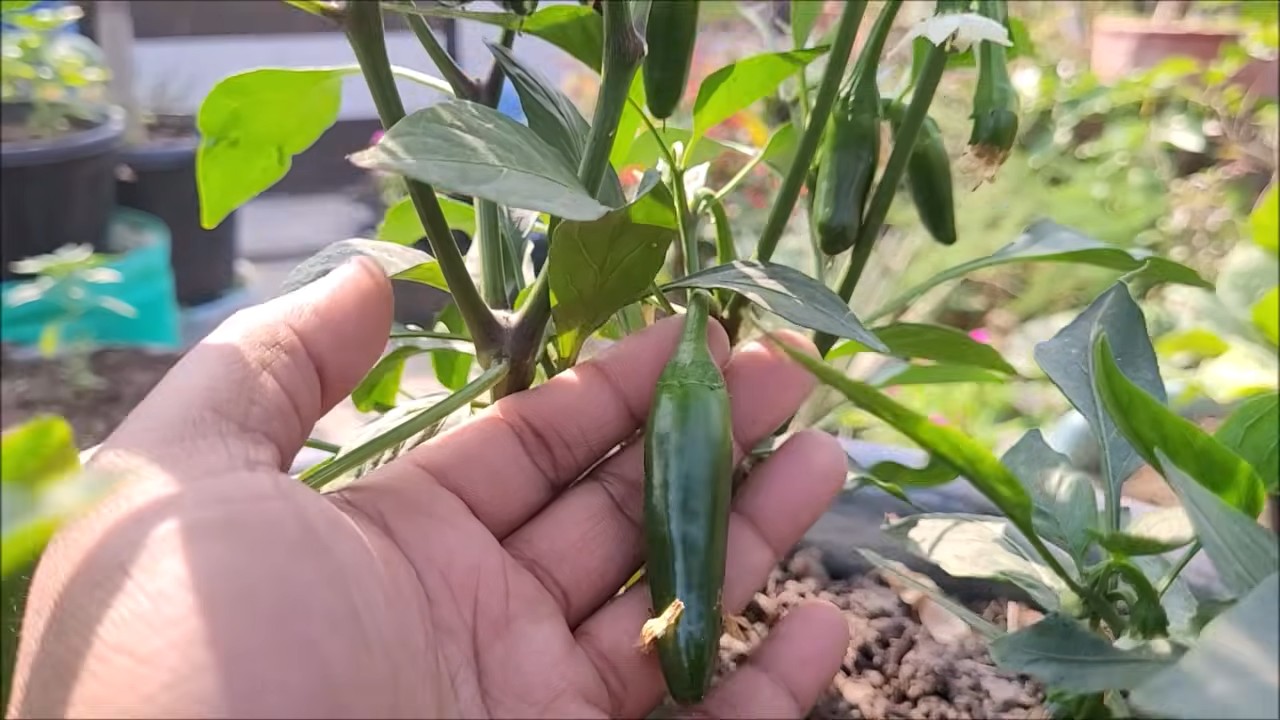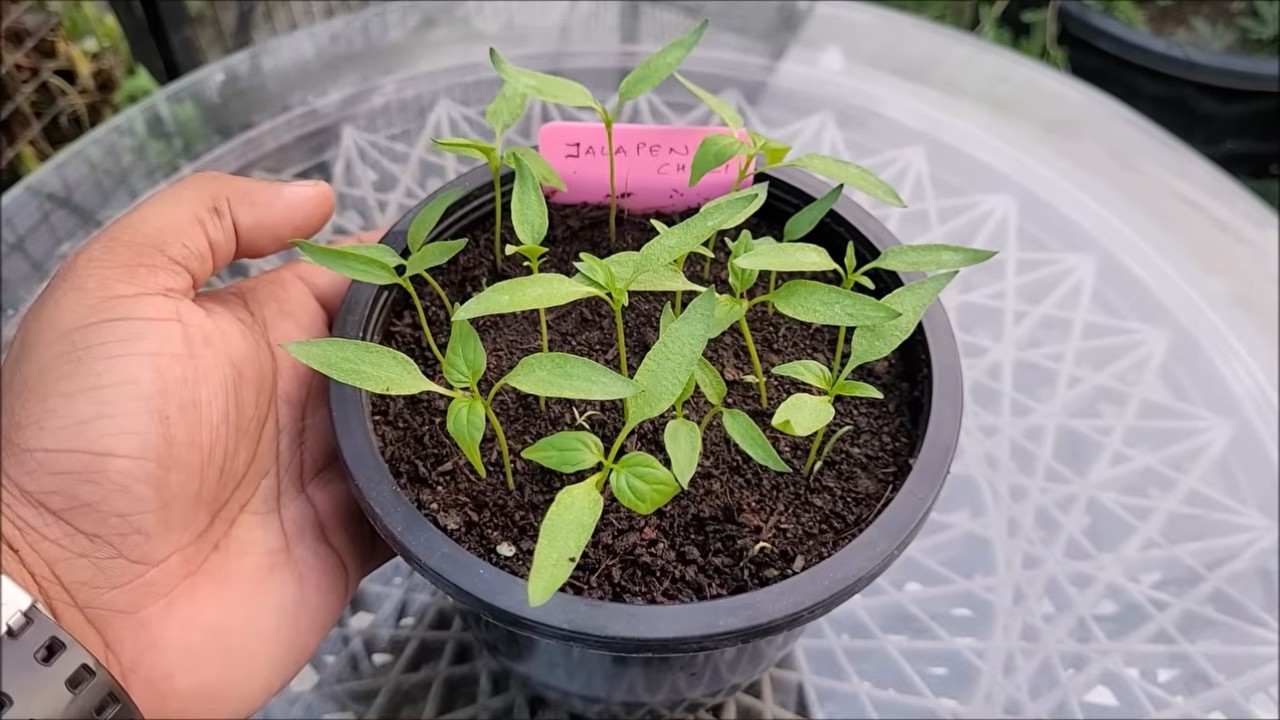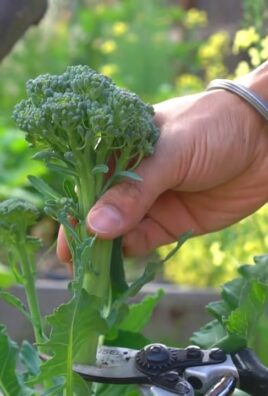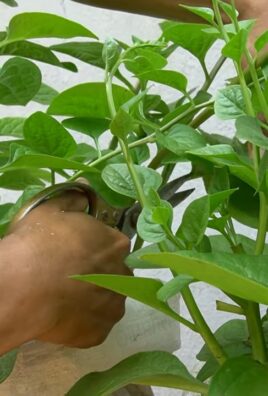Grow Jalapeno Peppers like a pro, even if you think you have a black thumb! Have you ever dreamt of adding a fiery kick to your homemade salsa or a zesty punch to your tacos, all with peppers you’ve nurtured yourself? Well, stop dreaming and start doing! This isn’t just another gardening guide; it’s your personal roadmap to a bountiful jalapeno harvest, right in your own backyard (or balcony!).
The jalapeno, a staple in Mexican cuisine, boasts a rich history dating back centuries. From its humble beginnings in the Veracruz region, it has conquered taste buds worldwide. But beyond its culinary appeal, growing your own jalapenos offers a unique connection to this vibrant heritage. Imagine the satisfaction of harvesting peppers that have thrived under your care, knowing you’re participating in a tradition that spans generations.
Why should you embark on this spicy adventure? Because store-bought jalapenos simply can’t compare to the flavor and freshness of homegrown ones. Plus, let’s be honest, gardening is therapeutic! It’s a chance to connect with nature, de-stress, and witness the miracle of life unfolding before your eyes. And with our easy-to-follow DIY tricks and hacks, even the most novice gardener can successfully grow Jalapeno Peppers. We’ll guide you through everything from seed selection to pest control, ensuring you have a thriving pepper patch in no time. Get ready to spice up your life, one jalapeno at a time!

Jalapeños selber ziehen: So klappt’s garantiert!
Ich liebe Jalapeños! Der leicht scharfe Geschmack, die knackige Textur – einfach perfekt, um Gerichten das gewisse Etwas zu verleihen. Und was gibt es Besseres, als die eigenen Jalapeños im Garten oder auf dem Balkon zu ziehen? Es ist einfacher, als du denkst, und ich zeige dir, wie es geht!
Die Vorbereitung: Alles, was du brauchst
Bevor wir loslegen, brauchen wir natürlich das richtige Equipment. Keine Sorge, es ist nichts Außergewöhnliches dabei.
* Jalapeño-Samen: Du kannst sie online, im Gartencenter oder sogar in manchen Supermärkten finden. Achte auf eine gute Qualität, damit die Keimung auch klappt.
* Anzuchterde: Normale Blumenerde ist zu nährstoffreich für die zarten Keimlinge. Anzuchterde ist lockerer und enthält weniger Nährstoffe, was ideal ist.
* Anzuchttöpfe oder -schalen: Kleine Töpfe oder Schalen mit Drainagelöchern sind perfekt. Du kannst auch Eierkartons oder Joghurtbecher (mit Löchern!) verwenden.
* Mini-Gewächshaus oder Frischhaltefolie: Um die Luftfeuchtigkeit hoch zu halten, brauchen wir eine Art “Dach” für unsere Anzucht.
* Sprühflasche: Zum Befeuchten der Erde.
* Pikierstab oder Bleistift: Zum Vereinzeln der Keimlinge.
* Gießkanne: Zum späteren Gießen der Pflanzen.
* Dünger: Spezieller Chili-Dünger ist ideal, aber ein Tomatendünger tut es auch.
* Töpfe oder Kübel: Für die ausgewachsenen Pflanzen. Sie sollten mindestens 10 Liter Fassungsvermögen haben.
* Blumenerde: Für die Töpfe oder Kübel.
* Sonniger Standort: Jalapeños lieben die Sonne!
Die Aussaat: Der Start ins Jalapeño-Glück
Die Aussaat ist der erste Schritt, und hier ist es wichtig, sorgfältig vorzugehen.
1. Anzuchttöpfe vorbereiten: Fülle die Anzuchttöpfe oder -schalen mit Anzuchterde. Drücke die Erde leicht an.
2. Samen aussäen: Lege in jeden Topf 2-3 Samen. Sie sollten etwa 0,5-1 cm tief in der Erde liegen.
3. Mit Erde bedecken: Bedecke die Samen mit einer dünnen Schicht Anzuchterde.
4. Befeuchten: Befeuchte die Erde vorsichtig mit der Sprühflasche. Sie sollte feucht, aber nicht nass sein.
5. Mini-Gewächshaus oder Frischhaltefolie: Stelle die Töpfe in ein Mini-Gewächshaus oder bedecke sie mit Frischhaltefolie. Das sorgt für eine hohe Luftfeuchtigkeit.
6. Warm stellen: Stelle die Töpfe an einen warmen Ort. Die ideale Keimtemperatur liegt bei 22-28°C. Eine Heizmatte kann hier sehr hilfreich sein.
7. Geduld haben: Jetzt heißt es warten. Die Keimung dauert in der Regel 1-3 Wochen. Halte die Erde feucht, aber vermeide Staunässe.
Das Pikieren: Den kleinen Pflanzen mehr Raum geben
Sobald die ersten Keimlinge ihre Köpfe aus der Erde strecken und die ersten richtigen Blätter (nach den Keimblättern) entwickelt haben, ist es Zeit zum Pikieren. Das bedeutet, dass wir die kleinen Pflänzchen vereinzeln, damit sie genügend Platz zum Wachsen haben.
1. Vorbereitung: Fülle kleine Töpfe (ca. 8-10 cm Durchmesser) mit Anzuchterde.
2. Keimlinge vorsichtig ausheben: Lockere die Erde um die Keimlinge vorsichtig mit einem Pikierstab oder Bleistift. Hebe die Keimlinge vorsichtig an den Blättern (nicht am Stängel!) aus der Erde.
3. Einpflanzen: Setze jeden Keimling in einen eigenen Topf. Die Wurzeln sollten ausreichend Platz haben.
4. Mit Erde auffüllen: Fülle die Töpfe mit Erde auf und drücke sie leicht an.
5. Angießen: Gieße die Keimlinge vorsichtig an.
6. Heller Standort: Stelle die pikierten Pflänzchen an einen hellen Ort, aber vermeide direkte Mittagssonne.
Die Pflege: Damit deine Jalapeños prächtig gedeihen
Nach dem Pikieren beginnt die eigentliche Pflege. Hier sind die wichtigsten Punkte:
* Gießen: Gieße die Pflanzen regelmäßig, aber vermeide Staunässe. Die Erde sollte immer leicht feucht sein.
* Düngen: Beginne etwa 2-3 Wochen nach dem Pikieren mit dem Düngen. Verwende einen speziellen Chili-Dünger oder Tomatendünger. Dünge alle 2-3 Wochen.
* Lüften: Wenn du ein Mini-Gewächshaus verwendest, lüfte es regelmäßig, um Schimmelbildung zu vermeiden.
* Drehen: Drehe die Töpfe regelmäßig, damit die Pflanzen gleichmäßig wachsen und sich nicht zum Licht hinbiegen.
* Aushärten: Bevor du die Pflanzen ins Freie pflanzt, solltest du sie abhärten. Das bedeutet, dass du sie für einige Stunden am Tag ins Freie stellst, um sie an die Sonne und den Wind zu gewöhnen. Beginne mit einer Stunde und steigere die Zeit langsam.
Das Auspflanzen: Ab ins Beet oder in den Kübel!
Sobald die Temperaturen steigen und keine Frostgefahr mehr besteht (in der Regel Mitte Mai), können die Jalapeño-Pflanzen ins Freie gepflanzt werden.
1. Standort wählen: Wähle einen sonnigen Standort mit gut durchlässigem Boden.
2. Boden vorbereiten: Lockere den Boden auf und entferne Unkraut. Du kannst auch etwas Kompost oder organischen Dünger einarbeiten.
3. Pflanzlöcher graben: Grabe Pflanzlöcher, die etwas größer sind als die Töpfe der Pflanzen.
4. Pflanzen einsetzen: Setze die Pflanzen vorsichtig aus den Töpfen in die Pflanzlöcher. Achte darauf, dass die Wurzeln nicht beschädigt werden.
5. Mit Erde auffüllen: Fülle die Pflanzlöcher mit Erde auf und drücke sie leicht an.
6. Angießen: Gieße die Pflanzen gründlich an.
7. Abstand halten: Pflanze die Jalapeños mit einem Abstand von etwa 40-50 cm zueinander.
Die Ernte: Endlich Jalapeños!
Nach etwa 70-80 Tagen nach dem Auspflanzen kannst du die ersten Jalapeños ernten. Sie sind reif, wenn sie eine dunkelgrüne Farbe haben und sich fest anfühlen. Du kannst sie aber auch rot werden lassen, dann sind sie etwas süßer.
* Ernten: Schneide die Jalapeños mit einem scharfen Messer oder einer Schere ab.
* Regelmäßig ernten: Ernte die Jalapeños regelmäßig, um die Pflanze zur Bildung neuer Früchte anzuregen.
Zusätzliche Tipps für eine reiche Ernte
* Stützen: Wenn die Pflanzen viele Früchte tragen, können sie umknicken. Stütze sie mit Stäben oder einem Rankgitter.
* Mulchen: Mulche den Boden um die Pflanzen mit Stroh oder Rasenschnitt. Das hält den Boden feucht und unterdrückt Unkraut.
* Schädlinge und Krankheiten: Achte auf Schädlinge und Krankheiten. Blattläuse, Spinnmilben und Mehltau können Jalapeño-Pflanzen befallen. Bei Bedarf kannst du biologische Schädlingsbekämpfungsmittel einsetzen.
* Bestäubung: Jalapeños sind Selbstbestäuber, aber du kannst die Bestäubung unterstützen, indem du die Pflanzen leicht schüttelst oder mit einem Pinsel über die Blüten streichst.
Häufige Probleme und Lösungen
* Gelbe Blätter: Gelbe Blätter können ein Zeichen für Nährstoffmangel sein. Dünge die Pflanzen mit einem Chili-Dünger.
* Blütenfall: Blütenfall kann durch Stress verursacht werden, z.B. durch zu hohe oder zu niedrige Temperaturen,

Conclusion
So, there you have it! Growing your own jalapeno peppers is not only achievable, but it’s also incredibly rewarding. From the vibrant green plants adorning your garden or balcony to the fiery kick they add to your favorite dishes, these little peppers pack a serious punch. We’ve walked you through the essential steps, from selecting the right seeds and nurturing seedlings to providing optimal growing conditions and harvesting your bounty.
But why is this DIY trick a must-try? Beyond the sheer satisfaction of cultivating your own food, growing jalapeno peppers offers several compelling advantages. Firstly, you have complete control over the growing process. You can choose organic methods, avoiding harmful pesticides and herbicides, ensuring that your peppers are as healthy and natural as possible. Secondly, homegrown jalapenos often boast a superior flavor compared to store-bought varieties. The freshness and the care you put into their cultivation translate into a more intense and nuanced taste. Finally, it’s a cost-effective way to enjoy these spicy delights. Once you’ve established your plants, you can harvest peppers throughout the growing season, saving money and reducing your reliance on grocery stores.
Looking for variations? Consider experimenting with different jalapeno varieties. There are milder options like the TAM Mild Jalapeno, or if you’re feeling adventurous, try growing the Serrano pepper for an even hotter kick. You can also explore different growing methods. Hydroponics, for example, can be a fun and efficient way to cultivate jalapenos indoors. Another variation is to pickle your harvested jalapenos for long-term storage and enjoyment. Pickled jalapenos are a fantastic addition to sandwiches, tacos, and nachos. You can also dry your peppers and grind them into a homemade chili powder.
Don’t be intimidated if you’re a beginner gardener. Growing jalapeno peppers is a relatively straightforward process, and with a little patience and attention, you’ll be harvesting your own spicy peppers in no time. Remember to provide your plants with plenty of sunlight, well-draining soil, and consistent watering. Keep an eye out for pests and diseases, and address any issues promptly.
We wholeheartedly encourage you to give this DIY trick a try. Imagine the satisfaction of adding your own homegrown jalapenos to your next batch of salsa or sprinkling them on your favorite pizza. The possibilities are endless!
Now, it’s your turn. Get your hands dirty, nurture those seedlings, and experience the joy of growing your own jalapeno peppers. We’re confident that you’ll be amazed by the results. And most importantly, we want to hear about your experience! Share your tips, successes, and challenges in the comments below. Let’s create a community of jalapeno-growing enthusiasts and learn from each other. Happy growing!
Frequently Asked Questions (FAQ)
What is the best time to start growing jalapeno peppers?
The ideal time to start growing jalapeno peppers depends on your climate. In general, you should start seeds indoors 6-8 weeks before the last expected frost. This allows the seedlings to develop a strong root system before being transplanted outdoors. If you live in a warmer climate with a longer growing season, you can start seeds directly in the ground after the last frost has passed. However, starting indoors provides a head start and ensures a more successful harvest. Consider using a heat mat to help with germination, as jalapeno seeds prefer warmer temperatures.
How much sunlight do jalapeno peppers need?
Jalapeno peppers thrive in full sunlight, requiring at least 6-8 hours of direct sunlight per day. Insufficient sunlight can lead to leggy plants with reduced fruit production. If you’re growing your peppers indoors, consider using grow lights to supplement natural sunlight. Position the grow lights close to the plants and adjust their height as the plants grow. When transplanting seedlings outdoors, choose a location that receives ample sunlight throughout the day.
What type of soil is best for growing jalapeno peppers?
Jalapeno peppers prefer well-draining soil that is rich in organic matter. A slightly acidic to neutral pH (6.0-7.0) is ideal. Amend your soil with compost or well-rotted manure to improve drainage and fertility. Avoid heavy clay soils, as they can retain too much moisture and lead to root rot. If you’re growing in containers, use a high-quality potting mix specifically formulated for vegetables.
How often should I water my jalapeno pepper plants?
Water your jalapeno pepper plants regularly, especially during hot and dry weather. The soil should be consistently moist but not waterlogged. Overwatering can lead to root rot, while underwatering can stress the plants and reduce fruit production. Check the soil moisture by inserting your finger about an inch deep. If the soil feels dry, it’s time to water. Water deeply and thoroughly, allowing the water to reach the roots. Mulching around the plants can help retain moisture and suppress weeds.
What are some common pests and diseases that affect jalapeno peppers?
Jalapeno peppers can be susceptible to various pests and diseases, including aphids, whiteflies, spider mites, blossom-end rot, and fungal diseases. Regularly inspect your plants for signs of infestation or disease. Aphids, whiteflies, and spider mites can be controlled with insecticidal soap or neem oil. Blossom-end rot, caused by calcium deficiency, can be prevented by ensuring adequate calcium levels in the soil and providing consistent watering. Fungal diseases can be prevented by providing good air circulation and avoiding overhead watering.
How do I harvest jalapeno peppers?
Jalapeno peppers are typically ready to harvest when they are about 2-3 inches long and have a deep green color. You can also allow them to turn red for a slightly sweeter and hotter flavor. Use pruning shears or a sharp knife to cut the peppers from the plant, leaving a small stem attached. Harvest regularly to encourage continued fruit production.
Can I grow jalapeno peppers in containers?
Yes, jalapeno peppers can be successfully grown in containers. Choose a container that is at least 12 inches in diameter and has drainage holes. Use a high-quality potting mix and provide regular watering and fertilization. Container-grown peppers may require more frequent watering than those grown in the ground.
How do I fertilize my jalapeno pepper plants?
Fertilize your jalapeno pepper plants regularly with a balanced fertilizer. Apply fertilizer according to the package instructions. Avoid over-fertilizing, as this can lead to excessive foliage growth and reduced fruit production. You can also use organic fertilizers, such as compost tea or fish emulsion.
How can I make my jalapeno peppers hotter?
Several factors can influence the heat level of jalapeno peppers. Stressing the plants by withholding water or fertilizer can increase the capsaicin content, which is responsible for the heat. Allowing the peppers to ripen fully and turn red can also increase their heat.
What can I do with my harvested jalapeno peppers?
The possibilities are endless! You can use them fresh in salsas, tacos, and other dishes. You can also pickle them, dry them, or freeze them for later use. Jalapeno peppers can also be used to make hot sauce, chili powder, and other spicy condiments. Get creative and experiment with different recipes to find your favorite ways to enjoy your homegrown jalapeno peppers.




Leave a Comment